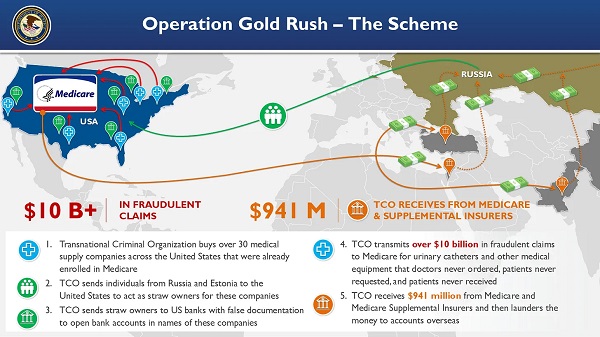Business
Corporate Canada betrayed capitalism. Now it has been betrayed

From the Fraser Institute
By Bruce Pardy
The original Battlestar Galactica, a campy space opera, debuted on network television in 1978. Canadian actor John Colicos played the traitor Baltar, who helps robot Cylons ambush human civilization. After humans have been almost wiped out, Baltar is hauled before the Cylons’ Imperious Leader. “What of our bargain?!” Baltar demands. “My colony was to be spared!” The Leader says he has altered the bargain. “How can you change one side of a bargain?!” Baltar spits, not getting it. “When there is no other side,” the robot tells him, “You have missed the entire point of the war. There can be no survivors.” “Surely,” Baltar stammers, finally understanding, “you don’t mean me.”
Corporate Canada should know the feeling. After years of colluding with climate hysteria and betraying capitalism, Canadian companies have been dumped at the curb.
On June 20, Bill C-59 received Royal Assent. It’s a hodgepodge bill of humdrum provisions, hundreds of pages long, related to last year’s spring federal budget and fall economic statement. But buried in the stack are two sections that prohibit “greenwashing.” Businesses cannot claim that their products or practices help to protect against climate change or provide other environmental benefits unless they can prove the claims are true. The provisions amend the Competition Act and make climate and other environmental claims subject to the same regulatory regime as false advertising.
Companies and industry associations have taken down climate pledges and environmental commitments from their websites and social media. “Ottawa’s ban on ‘greenwashing’ has already put a chill on climate disclosure targets,” objected Deborah Yedlin, president and CEO of the Calgary Chamber of Commerce, in a commentary for CTV. It will affect the entire economy, she wrote, add bureaucratic burden, halt investment, and weigh on Canada’s sagging productivity. Corporate Canada has lost its climate bargain.
Over the course of decades, Western countries, but nowhere more than Canada, have undergone a cultural revolution. Accelerating climate activism, aggressive social justice ideology and managerial government have changed the landscape. Business elites, instead of defending capitalism, competition, open markets, the rule of law and other values of Western civilization, decided to switch rather than fight. To protect their own prosperity and influence, corporate leaders learned to speak the language and adopt the norms of progressive collectivism. They became cheerleaders for the new regime. Many came to believe in it themselves.
Companies took on new roles. The social responsibility of business became not merely to increase its profits, as Milton Friedman famously insisted, but to serve as social welfare agencies. They were not just to obey the law and deliver products and services that people wanted to buy, but to pursue social and environmental causes. They would serve the interests not just of their shareholders but their “stakeholders,” as “Environmental, Social and Governance” (ESG) models demanded.
In their marketing and rhetoric, they embraced climate action, corporate social responsibility, social licence, “equity, diversity and inclusion” (EDI) and social justice. They promoted the United Nations Sustainable Development Goals (SDGs), which are a blueprint for socialist managerialism. The Business Council of Canada endorsed carbon pricing and Canada’s climate plans. Major oil companies promoted net zero and repeated the kinds of claims that governments themselves made: that climate action in Canada helps to prevent the climate from changing.
Such claims are patently false. Even if you believe in anthropogenic climate change, if your country doesn’t contribute much to the problem, cutting its contribution isn’t a solution. Bringing Canadian carbon emissions to zero would make no measurable difference to anything. Countries that together produce far and away most of the emissions on Earth have no intention of changing their paths. And who can blame them? If I were them, I would do the same.
Canada excels at climate boondoggles. Carbon taxes are just more money for government coffers that do not necessarily reduce emissions, if that actually mattered.
Wind and solar power, a lucrative source of government largesse that some businesses have adeptly saddled up to, don’t replace fossil fuels. Carbon capture and storage, perhaps the most pathetic pretend of them all, is a breathtakingly expensive symbolic gesture that cannot be applied at scale. The Paris accord and its net zero aspirations are climate fairy tales.
Canadian business leaders would never say any of this. That was the deal: pay homage to the climate gods, and you can be on the team. But now they can’t.
Progressive statism has never been about the climate, or transgenderism, or whatever the cause du jour. The target has always been Western values and principles. Free enterprise is anathema to its aspirations, and as it turns out, so is prosperity itself. Canadian companies have betrayed the economic principles of their own society. How does government change one side of a bargain? When there is no other side.
The Canadian business community still does not understand the point of the revolution. There can be no survivors. Surely, they sputter, you don’t mean us.
Author:
Business
WEF-linked Linda Yaccarino to step down as CEO of X
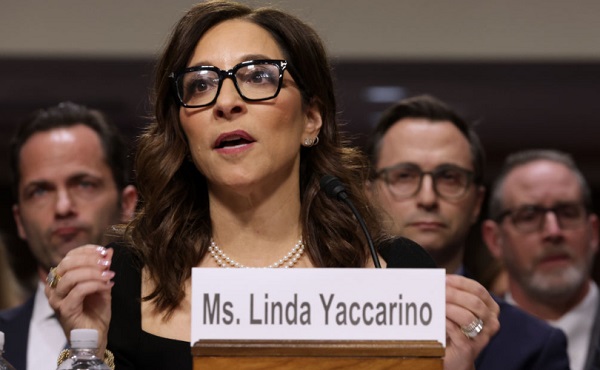
From LifeSiteNews
Yaccarino had raised concerns among conservatives and free speech advocates for previously serving as chairwoman of a World Economic Forum taskforce and promoting DEI and the COVID shots.
X CEO, Linda Yaccarino, announced today that she is departing from her position at the social media giant.
“After two incredible years, I’ve decided to step down as CEO of 𝕏,” wrote Yaccarino on X.
“When Elon Musk and I first spoke of his vision for X, I knew it would be the opportunity of a lifetime to carry out the extraordinary mission of this company,” she continued. “I’m immensely grateful to him for entrusting me with the responsibility of protecting free speech, turning the company around, and transforming X into the Everything App.”
“I’m incredibly proud of the X team – the historic business turn around we have accomplished together has been nothing short of remarkable,” she said.
After two incredible years, I’ve decided to step down as CEO of 𝕏.
When @elonmusk and I first spoke of his vision for X, I knew it would be the opportunity of a lifetime to carry out the extraordinary mission of this company. I’m immensely grateful to him for entrusting me…
— Linda Yaccarino (@lindayaX) July 9, 2025
Musk hired Yaccarino in May 2023, seven months after his $44 billion purchase of the tech company, then known as “Twitter.”
At the time, Musk’s choice to take the helm at his newly acquired company raised eyebrows among conservative observers who had earlier rejoiced at the tech mogul’s intent to rescue free speech on the internet but now were troubled about the credentials of the digital platform’s new head.
Their concerns were not without good reason.
Yaccarino had previously served as chairwoman of the World Economic Forum’s “future of work” taskforce and sat on the globalist group’s “steering committee” for “media, entertainment, and culture industry.”
She had also boasted about her role as an early cheerleader for the untested COVID-19 jab.
As 2021–2022 Ad Council Chair, she “partnered with the business community, the White House, and government agencies to create a COVID-19 vaccination campaign, featuring Pope Francis and reaching over 200 million Americans,” according to her biography page at NBCUniversal, where she had been president before being lured to Twitter by Musk.
While at NBCUniversal, she also pushed discriminatory, equity-based hiring practices, based on “diversity” characteristics such as gender and race.
“At NBCU, she uses the power of media to advance equity and helps to launch DEI [Diversity, Equity, Inclusion]-focused initiatives,” recounted her online biography.
For the most part, over the last two years, Yaccarino’s performance at X allayed suspicions free speech activists at first harbored.
“Honestly, I was worried when she was hired but she didn’t burn down the house,” quipped popular conservative X account, @amuse.
Mike Benz, who serves as executive director of the Foundation For Freedom Online, a free speech watchdog organization dedicated to restoring the promise of a free and open internet, was far more effusive in his praise of Yaccarino.
“Linda stood up and fought for free speech during arguably its most acute crisis moment in world history when we were almost on the brink of losing it,” said Benz in an X post. “She stepped up for all of us in the face of what seemed like insurmountable pressure from governments, advertisers, boycotters, banking institutions, and astroturfed lynch mobs.”
Automotive
Federal government should swiftly axe foolish EV mandate

From the Fraser Institute
Two recent events exemplify the fundamental irrationality that is Canada’s electric vehicle (EV) policy.
First, the Carney government re-committed to Justin Trudeau’s EV transition mandate that by 2035 all (that’s 100 per cent) of new car sales in Canada consist of “zero emission vehicles” including battery EVs, plug-in hybrid EVs and fuel-cell powered vehicles (which are virtually non-existent in today’s market). This policy has been a foolish idea since inception. The mass of car-buyers in Canada showed little desire to buy them in 2022, when the government announced the plan, and they still don’t want them.
Second, President Trump’s “Big Beautiful” budget bill has slashed taxpayer subsidies for buying new and used EVs, ended federal support for EV charging stations, and limited the ability of states to use fuel standards to force EVs onto the sales lot. Of course, Canada should not craft policy to simply match U.S. policy, but in light of policy changes south of the border Canadian policymakers would be wise to give their own EV policies a rethink.
And in this case, a rethink—that is, scrapping Ottawa’s mandate—would only benefit most Canadians. Indeed, most Canadians disapprove of the mandate; most do not want to buy EVs; most can’t afford to buy EVs (which are more expensive than traditional internal combustion vehicles and more expensive to insure and repair); and if they do manage to swing the cost of an EV, most will likely find it difficult to find public charging stations.
Also, consider this. Globally, the mining sector likely lacks the ability to keep up with the supply of metals needed to produce EVs and satisfy government mandates like we have in Canada, potentially further driving up production costs and ultimately sticker prices.
Finally, if you’re worried about losing the climate and environmental benefits of an EV transition, you should, well, not worry that much. The benefits of vehicle electrification for climate/environmental risk reduction have been oversold. In some circumstances EVs can help reduce GHG emissions—in others, they can make them worse. It depends on the fuel used to generate electricity used to charge them. And EVs have environmental negatives of their own—their fancy tires cause a lot of fine particulate pollution, one of the more harmful types of air pollution that can affect our health. And when they burst into flames (which they do with disturbing regularity) they spew toxic metals and plastics into the air with abandon.
So, to sum up in point form. Prime Minister Carney’s government has re-upped its commitment to the Trudeau-era 2035 EV mandate even while Canadians have shown for years that most don’t want to buy them. EVs don’t provide meaningful environmental benefits. They represent the worst of public policy (picking winning or losing technologies in mass markets). They are unjust (tax-robbing people who can’t afford them to subsidize those who can). And taxpayer-funded “investments” in EVs and EV-battery technology will likely be wasted in light of the diminishing U.S. market for Canadian EV tech.
If ever there was a policy so justifiably axed on its failed merits, it’s Ottawa’s EV mandate. Hopefully, the pragmatists we’ve heard much about since Carney’s election victory will acknowledge EV reality.
-
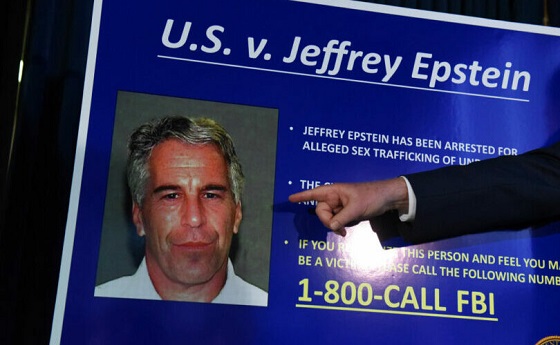
 Crime2 days ago
Crime2 days ago“This is a total fucking disaster”
-

 Fraser Institute1 day ago
Fraser Institute1 day agoBefore Trudeau average annual immigration was 617,800. Under Trudeau number skyrocketted to 1.4 million annually
-
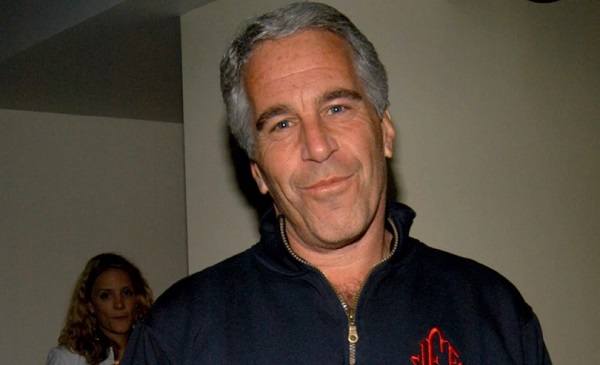
 Daily Caller2 days ago
Daily Caller2 days ago‘I Know How These People Operate’: Fmr CIA Officer Calls BS On FBI’s New Epstein Intel
-

 MAiD2 days ago
MAiD2 days agoCanada’s euthanasia regime is already killing the disabled. It’s about to get worse
-
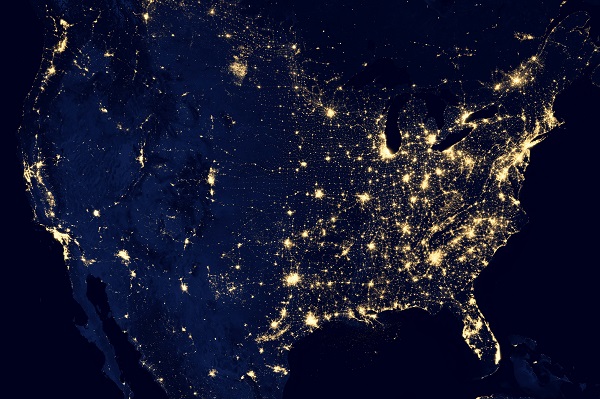
 Daily Caller2 days ago
Daily Caller2 days agoBlackouts Coming If America Continues With Biden-Era Green Frenzy, Trump Admin Warns
-

 Frontier Centre for Public Policy1 day ago
Frontier Centre for Public Policy1 day agoNew Book Warns The Decline In Marriage Comes At A High Cost
-

 Red Deer2 days ago
Red Deer2 days agoJoin SPARC in spreading kindness by July 14th
-

 Business1 day ago
Business1 day agoPrime minister can make good on campaign promise by reforming Canada Health Act






